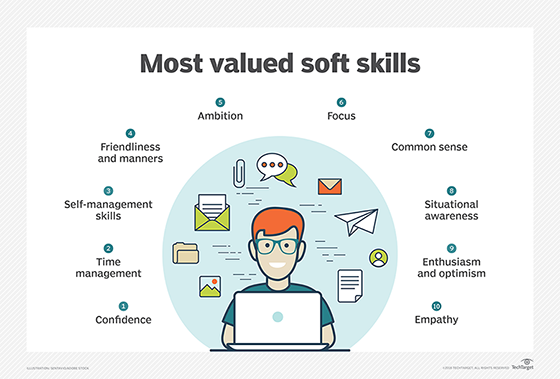Predictive Index (PI)
What is the Predictive Index (PI)?
The Predictive Index (PI) is a theory-based, self-report measurement of normal, adult, work-related personality that was developed and validated for use in occupational and organizational populations. It illuminates a candidate's personality and cognitive abilities, helping organizations make data-driven, objective hiring decisions. This transcends what they can determine from a skills- and experienced-focused resume or CV.
What is the Predictive Index test?
The Predictive Index measures an individual's personality characteristics. Specifically, it measures their behavioral drives on the basis of four parameters -- dominance, extroversion, patience and formality -- and their cognitive ability. Mainly used by hiring managers in organizational settings, it can help them evaluate potential employees and determine their fit for the organization.
The behavioral part of the test employs a free-choice response format, in which individuals are presented with two lists of descriptive adjectives, both containing 86 items. They are asked to endorse those that they feel describe themselves, or the self domain, and then those that coincide with how they feel others expect them to behave, or the self-concept domain.
Summing across these two domains yields a third implied domain, the synthesis, which can be interpreted as reflecting an employee's personality traits and their observable behavior in the workplace. This information acts as a guidepost for making best-fit hiring decisions.
What are the 4 factors of the Predictive Index?
Many companies and their hiring managers include a Predictive Index assessment in their hiring process. The assessment is untimed, generally takes five to 10 minutes to complete, and is available in paper-and-pencil, desktop and web-based formats. It is also available in 70 languages, including Braille. The index and assessment measure four primary and fundamental personality constructs of a potential employee:
- Dominance. This factor reflects the degree to which an individual seeks to control their environment. Individuals who score high on this dimension are independent, assertive and self-confident. Individuals who score low on this dimension are agreeable, cooperative and accommodating.
- Extroversion. Also known as extraversion, this factor reflects the degree to which an individual seeks social interaction with others. Individuals who score high on this dimension are outgoing, persuasive and socially poised. Those who score low are serious, introspective and task-oriented rather than people-oriented -- though introverts can share their ideas more easily now using digital tools.
- Patience. This factor reflects the degree to which an individual seeks consistency and stability in their work environment. Individuals who score high are patient, consistent and deliberate. Lower scores are associated with individuals who are fast-paced, urgent and intense. For some roles, such as that of a chief information officer, impatience might actually be desirable.
- Formality. This factor reflects the degree to which an individual seeks to conform to formal rules and structure. Individuals who score high here are organized, precise and self-disciplined -- rule followers. Those who score low are informal, casual and uninhibited -- rule breakers or rule benders. For example, some IT developers like to break the rules of corporate procurement.
The PI also measures two secondary personality constructs derived from a combination of each of the four primary personality constructs:
- Decision-making. This measures how an individual processes information and makes decisions. Individuals who score high on this dimension are objective, logical, and primarily influenced by facts and data rather than feelings or gut instinct. Individuals who score low are subjective, intuitive and primarily influenced by feelings and emotions more than tangible data.
- Response level. This factor measures an individual's overall responsiveness to the environment, which is reflected in their energy, activity level and stamina. Individuals who score high on this dimension have an enhanced capacity to sustain activity and tolerate stress over longer periods of time. Individuals who score low have less of this capacity.

Where is the Predictive Index used?
The Predictive Index is used for various human resource management purposes, including employee selection, executive onboarding, leadership development, succession planning, performance coaching, team building and organizational culture change, among others.
Using the PI to increase understanding of the particular strengths and characteristics of staff members and act on that insight can also help increase employee engagement and productivity and decrease staff turnover. It can also help company managers and leaders understand gaps in team dynamics and then implement strategies to improve those. In the long term, understanding employees' and teams' behavioral styles and cognitive abilities can help leaders understand if there is alignment between team performance and enterprise strategic goals.
Types of Predictive Index tests
There are two types of PI tests that employers can use to assess and screen candidates.
Predictive Index Behavioral Assessment (PIBA). The PIBA enables hiring managers to predict a candidate's future workplace behaviors and understand their personality. Based on this information, hiring managers can determine if the candidate is suited for the job for which they are being assessed.
Those who take the free-choice, untimed PIBA are assigned one of 17 reference profiles, each representing a grouping of the characteristics of people with similar drives.
There are four types of reference profiles:
- Analytical -- five reference profiles, including Analyzer and Strategist.
- Social -- six reference profiles, including Altruist and Collaborator.
- Persistent -- two reference profiles, Individualist and Scholar.
- Stabilizing -- four reference profiles, including Adapter.
Predictive Index Cognitive Assessment (PICA). The PICA measures a candidate's intelligence and cognitive ability. It enables hiring managers to predict how well a candidate will perform in learning new skills, understanding information, and adjusting to changing or complex workplace conditions.
Unlike the PIBA, the PICA is timed. It also takes longer to complete than the PIBA. The PICA includes three types of questions -- numerical, abstract and verbal -- with a total of 50. There are no "good" or "bad" scores. Rather, with this assessment, hiring managers can view and compare results with specific job requirements to determine a candidate's fit for that role.
Evolution of the Predictive Index
Arnold S. Daniels, a U.S. Army Air Corps bombardier and navigator, created the Predictive Index in the 1950s. His superiors wanted to get a better understanding of the structure and qualities of successful bombing teams. To promote this understanding, they partnered Daniels with a psychologist. This partnership led to Daniels' interest in psychometric testing and spurred him to create the PI and PIBA.
The PI and PIBA have been in widespread commercial use since 1955. Minor revisions were made in 1958, 1963, 1988 and 1992 to improve the PI's psychometric properties and ensure each of the individual items on the assessment conformed to appropriate and contemporary language norms. Today, there's increasing understanding of what psychological traits are valuable or expected for certain kinds of workers -- such as IT professionals, who are typically more creative, flexible and strategically aware.
Well over six decades after it was first introduced, the PI remains a popular, scientifically proven index of behavioral drivers in the workplace. The PIBA and PICA assessments and associated practices comply with the requirements and standards of numerous organizations, including the American Psychological Association, the U.S. Equal Employment Opportunity Commission, the Society for Industrial and Organizational Psychology, and the European Federation of Psychologists' Association.
Explore candidate journey mapping secrets savvy recruiters know.
